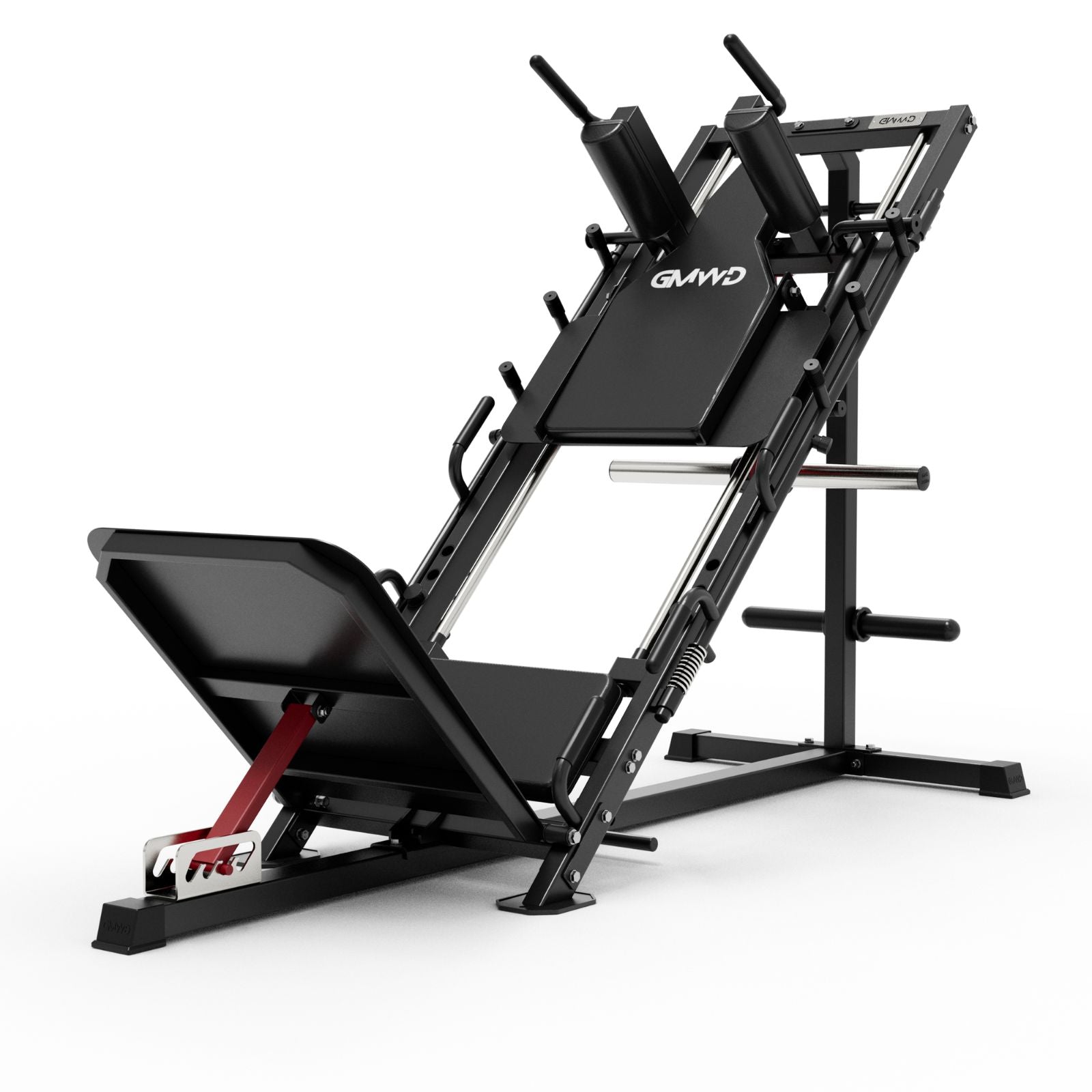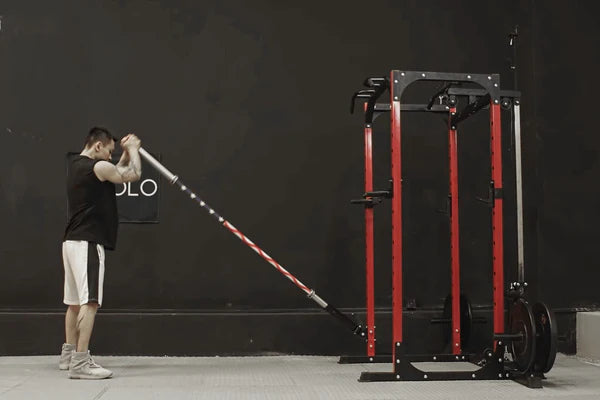Squatting is one of the three main lifts in powerlifting, alongside the bench press and deadlift. It is a compound movement that targets the legs, hips, and lower back, making it essential for building overall strength. In powerlifting, the squat serves as the foundation of lower-body power, and mastering squat form can lead to significant improvements in your lifting performance. Whether you are a beginner or an experienced powerlifter, perfecting your squat technique is crucial for lifting maximal loads and avoiding injuries.
What is Powerlifting?
Powerlifting is a strength sport that focuses on three main lifts: the squat, bench press, and deadlift. Athletes compete to lift the heaviest possible weight in each of these categories, with the total of all three lifts determining their score. While all three lifts are vital, the squat is often regarded as the cornerstone of a powerlifter's training. A properly executed squat can not only enhance overall leg strength but also improve other lifts, like the deadlift, which also relies on lower-body power.
The Role of Squat in Powerlifting
In powerlifting, the squat is primarily used to test an athlete's strength in the lower body, particularly the quadriceps, hamstrings, glutes, and lower back. When performing a squat, the lifter lowers their body by bending their knees and hips, then pushes back up to a standing position. The squat tests power, mobility, and technique, making it an excellent exercise for building functional strength.
Benefits of Squat for Powerlifters
- Strength Development: Squats are unmatched when it comes to building raw strength, especially in the legs, which are crucial for almost every powerlifting movement.
- Core Stability: Maintaining proper squat form requires strong core engagement, which helps with overall stability during all powerlifting movements.
- Improved Posture: Regularly squatting helps to reinforce a strong, upright posture, which is essential during heavy lifts.
- Injury Prevention: A well-performed squat promotes joint health and can prevent injuries by strengthening key muscle groups that support movements like deadlifts and bench presses.
Understanding Powerlifting Squat
The Powerlifting Squat Movement
A powerlifting squat involves a few key technical details that differ from a regular squat or bodyweight squat. In powerlifting, the squat must meet specific criteria, such as depth and control, to count as a successful lift. In competitions, the athlete must lower the barbell until their thighs are at least parallel to the floor, though some lifters prefer to squat deeper for better results.
Squat Variations in Powerlifting: Back, Front, and More
There are several squat variations used in powerlifting training. The most common is the back squat, where the barbell rests across the upper back. Front squats, which involve holding the barbell in front of the body, engage the quadriceps more and require greater upper back strength. Each variation can target different muscle groups, offering a balanced development of strength.
Powerlifting Squat Form
Key Components of Proper Squat Form
To perform a powerlifting squat correctly, lifters must adhere to specific form guidelines. Proper squat form helps ensure the movement is efficient and safe, minimizing injury risks.
- Foot Placement: Feet should be positioned about shoulder-width apart, with toes slightly pointed outwards.
- Hip and Knee Engagement: Initiate the movement by driving your hips back while simultaneously bending your knees. Keep the knees in line with the toes and avoid letting them cave inwards.
- Back Position: Maintain a neutral spine, with the chest lifted and the back tight. This reduces the strain on the lower back and prevents injury.
- Depth: Squat until the thighs are at least parallel to the floor or lower, depending on your body mechanics and flexibility.
Posture and Core Engagement in Squat Form
The key to mastering powerlifting squat form is maintaining an upright posture throughout the lift. Engage your core by taking a deep breath and bracing your midsection, creating a solid foundation to support the barbell’s weight. A neutral spine is crucial to avoid injury and maximize power output.
Powerlifting Squat Technique
Proper Foot Placement and Alignment
The correct foot placement for a powerlifting squat is typically shoulder-width apart, but this can vary depending on the individual’s body type and flexibility. The toes should be pointed slightly outward, which helps in engaging the hip muscles and allows for better squat depth. Ensuring that your feet are aligned properly allows for smoother movement and prevents unnecessary strain on the knees and hips.
Knee Tracking and Depth in Powerlifting Squats
A common mistake in squat technique is letting the knees cave inward during the descent. Knees should track in the same direction as the toes to ensure proper alignment and to avoid injury. Additionally, hitting the right depth is critical in powerlifting. While each federation may have slightly different requirements, depth is generally considered adequate when the top of the thighs is parallel to the floor, or deeper if possible.
The Role of Breathing in Powerlifting Squat Technique
Breathing is essential to maintaining control during a squat. Powerlifters typically perform a "Valsalva maneuver," which involves taking a deep breath before descending into the squat and holding it to create intra-abdominal pressure. This helps stabilize the spine and protect the lifter’s core.
Squat Technique for Powerlifting
Fixing Common Squat Form Mistakes
- Knee Caving: Often, lifters fail to properly align their knees with their toes. Using resistance bands or practicing squat variations like box squats can help correct this issue.
- Lack of Depth: If you're not hitting parallel, your range of motion may be limited. Stretching and mobility work can improve flexibility and squat depth.
- Leaning Forward: This is a common mistake, especially with heavier loads. Focus on keeping the chest up and the back straight to avoid excessive forward lean.
How to Adjust Squat Technique Based on Body Type
Body type plays a significant role in squat technique. Taller lifters may need a wider stance, while shorter lifters may find that a narrower stance works better for them. Adjusting foot placement and squat depth based on your unique body mechanics can optimize your technique and performance.
Perfecting Squat Depth and Bar Path
The bar path should move in a vertical line over the midfoot. The goal is to maintain a straight line from the barbell to your center of gravity to ensure maximum efficiency and power during the lift.
Power Lifter Squat Performance
Squat Programming for Powerlifters
Effective squat programming includes a combination of heavy lifting, volume training, and accessory exercises. Incorporating variations like paused squats, tempo squats, and box squats can target different muscle groups and improve squat performance. Progressive overload is also essential, gradually increasing weight to stimulate strength gains.
Building Leg Strength for Optimal Powerlifting Squat
Leg strength is the foundation of a good squat. Exercises like lunges, leg presses, and Romanian deadlifts can help target the quadriceps, hamstrings, and glutes. Additionally, training for overall lower body power and endurance will ensure you're prepared for heavy squat attempts.
Accessory Exercises for Improving Squat Technique
Incorporating accessory exercises like glute bridges, step-ups, and squats with chains can target the muscles that are crucial for proper squat form. These exercises help address weak points and improve your overall squat technique.
Troubleshooting Powerlifting Squats
Dealing with Mobility Restrictions
If you have tight hips, ankles, or hamstrings, squatting may be difficult or lead to poor form. Incorporating regular mobility drills and stretching routines will help you improve flexibility and squat technique over time.
Avoiding Common Powerlifting Squat Mistakes
It’s essential to pay attention to your body mechanics during every squat. Use video analysis to track your form and address any issues with your technique before they become habitual.
Advanced Squat Technique for Powerlifting
Speed and Explosiveness in the Squat
To build maximal squat strength, you must develop explosive power in your legs. Incorporating dynamic effort squats, jump squats, and speed squats can help develop this crucial power for competition day.
Managing Fatigue During Heavy Squats
As squats get heavier, fatigue management becomes key. Using strategies like deloading, tapering, and proper rest between sets ensures that you maintain optimal strength throughout your squat training.
Squat Accessories for Powerlifting
Best Equipment for Improving Squat Performance
A good powerlifting belt, knee sleeves, and squat shoes can enhance performance and help with safety during heavy lifts. Knee sleeves provide joint support, while squat shoes provide a stable base for optimal foot placement.
The Role of Squat Shoes in Powerlifting
Squat shoes are designed with a raised heel to improve ankle mobility and promote proper depth. Wearing squat shoes can help ensure proper form and make lifting easier and more comfortable.
Mental Aspects of Powerlifting Squat
Visualization and Mindset for Success in Powerlifting Squats
Visualization techniques can improve performance by helping you mentally rehearse the squat. Focusing on each step of the movement, from setup to execution, will increase confidence and reduce anxiety.
Overcoming Mental Barriers in Squat Training
Squatting heavy loads can be mentally taxing. Learning to push through fear, uncertainty, and fatigue is part of becoming a successful powerlifter. Developing a positive mindset and setting realistic goals will ensure long-term progress.
Conclusion
Mastering the powerlifting squat requires consistent practice, proper technique, and a focus on strength-building. By following the squat techniques outlined in this article and dedicating yourself to improving form, you'll see significant gains in both your squat and overall powerlifting performance. Keep working on your squat form, stay disciplined with your training, and you'll become a stronger, more successful powerlifter.











































Leave a comment
This site is protected by hCaptcha and the hCaptcha Privacy Policy and Terms of Service apply.